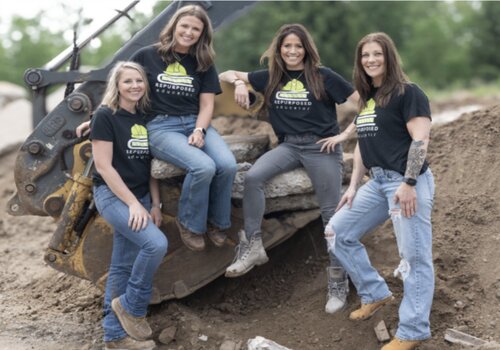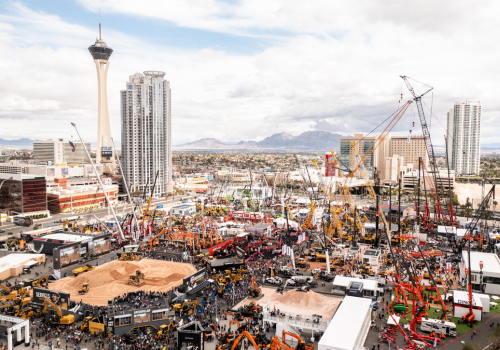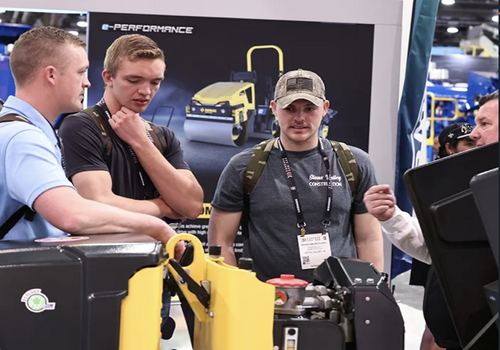Construction Teams Leverage the Internet of Things to Drive Productivity
Name just about any type of construction equipment, gear or apparel, and there’s a good chance that multiple tech startups are trying to put sensors on it. That’s because Internet-connected devices – the Internet of Things – collect jobsite data in real time to help construction firms make smarter decisions and optimize their operations.
Expanded Telematics
By equipping heavy-duty construction equipment with sensors, for example, companies can track the location and status of their assets to maximize usage and minimize unplanned downtime.
Through platforms such as Fleet Intelligence, companies can locate equipment across vast jobsites instantly and monitor its movement, discouraging theft. Managers can establish geofences, limiting the area where equipment should be, and receive digital notifications whenever equipment moves from that area, according to Dale Hanna, chief executive of Scottsdale, Ariz.-based Foresight Intelligence, which created Fleet Intelligence.
Maintenance teams can track data points such as fuel usage, fluid levels, interior air temperature, vibration and tire pressure, and when readings deviate from normal ranges, they can service equipment promptly, before small problems turn into big ones. Through conditions monitoring and preventative maintenance, construction firms can get the most out of their equipment and control their costs.
“When telematics were first introduced, it was all about tracking the location of equipment,” Hanna said. “Now, the sophistication of the technology is amazing, and we can collect hundreds of data points per machine.”
Why Track Usage?
By tracking asset usage, companies can be sure they have the right amount of equipment on each jobsite. On large projects where multiple crafts are working simultaneously, companies might think they need more bulldozers, excavators or trucks than they really do, which drives up rental costs or prevents companies from allocating their equipment to other projects, Hanna said.
Last fall, the eighth annual Construction Startup Competition showcased several advances in IoT platforms for construction projects. Established by a group that includes Cemex Ventures, Caterpillar and Hilti, the contest received submissions from more than 70 countries, with eight winners chosen.
Among the winning startups were Estonia’s GScan Ltd. and Austria’s Sodex Innovations. GScan uses a technology known as muon tomography to assess the chemical composition and structural integrity of infrastructure such as bridges and tunnels. It’s the only tool capable of seeing more than 40 centimeters into concrete or steel, according to GScan, helping to drive informed decisions about maintaining infrastructure.
Sodex’s tech solution involves installing laser scanners, Global Navigation Satellite System units and cameras onto construction equipment to create digital twins of jobsites. The hardware scans the terrain while working, detects any changes to aggregate stockpiles or other physical features, and uploads them to the cloud in real time, according to the company.
When telematics were first introduced, it was all about tracking the location of equipment. Now, the sophistication of the technology is amazing, and we can collect hundreds of data points per machine.
Dale Hanna
Chief Executive, Foresight Intelligence
Safety First
Enhanced jobsite safety is another major benefit of IoT devices. Smart helmets, vests, wristbands and watches are being used to monitor the location, heart rate, blood pressure and body temperature of workers to prevent heat exhaustion and health-related accidents.
During the pandemic, wearable devices helped to promote social distancing on jobsites and to streamline contact tracing following positive COVID-19 cases. Proximity sensors can detect when workers are approaching fall hazards or other high-risk areas and immediately alert supervisors to incidents.
Smart devices can improve offsite safety as well. Ernst Concrete, for example, now uses a dual-facing dashcam system from Motive to coach its truck drivers and prevent accidents. Powered by artificial intelligence, the cameras monitor drivers’ performance in real time, cutting down on dangerous behaviors such as cellphone usage, distracted driving, tailgating, hard braking, fast acceleration and seatbelt avoidance.
When those incidents occur, the system emits an audible tone and a verbal reminder to the driver. The cloud-based video system also documents those behaviors to aid in performance review. In the case of an accident, the company can count on getting video evidence that could absolve its drivers of responsibility and expedite insurance claims.
“Motive’s dual-facing AI dashcams have allowed us to approach safety in a much more proactive way,” said Paul Fly, director of risk and safety at Ernst. “In the past, we looked at lagging indicators and losses. Taking a proactive approach to safety has enabled us to reduce distracted driving and cellphone use by 81% in 13 months.”
Dig Safe
Underground utility strikes represent a significant danger to construction workers, but the IoT is making excavation projects safer. RodRadar’s Live Dig Radar technology uses sensor-equipped excavation buckets and a patented radar-imaging technology to detect underground utilities.
Before and during digging, operators place the buckets atop the soil to scan, and a screen inside the cabin displays the precise depth and location of buried utilities. Additionally, an audible tone warns operators not to dig if utilities are present.
In a simple example, an operator scans the ground, detects no buried utility infrastructure, uses the bucket to dig one foot down and then empties the bucket. Next, he’ll put the bucket into the newly created hole and scan again to detect pipes buried farther underground. By scanning after each bucket cycle, operators can have confidence that they’re not about to damage infrastructure.
RodRadar’s technology works in any type of soil and can detect all types of utilities, including power, communications, fiber-optic, water/wastewater and oil/gas. Depending on the soil properties and the materials used to build utilities, the radar can detect utilities buried more than a yard below the surface, according to Moshe Dalman, CEO of RodRadar, which he cofounded in Israel in 2013.
“When you’re digging in dry sand, you will see more than a meter down from the bucket – no problem,” Dalman said. “If you’re working in clay, you’ll have to peel the onion in much smaller bites, perhaps as small as 30 centimeters at a time, because the depth of penetration changes according to the circumstances. We present the real-time information directly to the operator in a very easy-to-understand and actionable way.”












